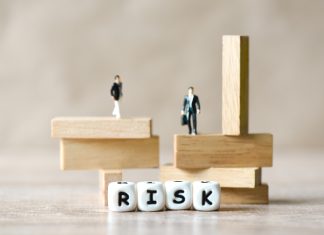By Marga Hoek
As climate change accelerates, so does employee climate anxiety—affecting well-being, performance, and retention. In this piece, Marga Hoek explores how leaders can no longer afford to ignore this growing concern. By fostering open dialogue and embedding sustainability, they can transform anxiety into action, driving purpose, innovation, and long-term success.
Climate anxiety, sometimes referred to as eco-anxiety, is emerging as an increasingly pressing concern for workers around the globe. Initially seen as a minor issue, its impact has grown as environmental challenges intensify. It’s now recognized as something that can affect mental health, job performance, and even how long employees stay with a company. As someone who speaks and writes about the balance between profit and doing good, I’ve seen how this growing concern about the environment impacts not just individual happiness, but the overall culture within organizations. If leaders ignore this issue, they risk having unmotivated teams and missing chances for success.
Recent events like intense heatwaves and natural disasters have made climate change a major concern for many employees. Younger people, especially Millennials and Gen Z, feel that caring for the environment is essential and expect their employers to feel the same urgency. A recent study showed that 68% of professionals under 35 have experienced significant anxiety about how climate issues will affect their future. This anxiety doesn’t just stay at home; it can lead to increased stress, irritability, and a drop in job performance. Leaders need to be aware that neglecting these feelings can lead to burnout and stifle creativity.
Concerns about climate change can lead to higher turnover among talented employees. If workers feel their company doesn’t take sustainability seriously, they’re more likely to look for jobs elsewhere that align with their values. Additionally, anxiety can make it hard to focus on tasks, leading to more absenteeism or employees being physically present but mentally distracted. This affects a company’s finances and creativity, as employees worried about the planet’s future may struggle to focus on the company’s future.
Leaders can help reduce eco-anxiety in their teams and strengthen their organizations. The first step to take is to show empathy and create an open, honest dialogue about sustainability. Facilitating open discussions, such as town hall meetings or Q&A sessions, shows that worries about climate change are valid and taken seriously.
Taking action is equally important. Sustainability efforts should be more than just a marketing strategy; they are crucial for employee well-being and loyalty. Companies don’t need to overhaul everything at once—small steps like using renewable energy sources, supporting responsible supply chains, or setting clear sustainability goals can help create a shared mission and give employees a sense of purpose. When workers see real advancements in sustainability, they can turn their worries into productive engagement, which ultimately benefits the company too.
Leaders can also focus on building a culture of climate resilience within a company’s strategy. While this can help to future-proof companies in employees eyes, it also makes good business sense. Companies with strong climate strategies often perform better financially.
However, building resilience also includes supporting employees. Leaders who focus on climate resilience create an environment where workers feel supported and empowered. This could mean providing mental health resources for eco-anxiety, allowing time off to volunteer for environmental causes, or encouraging teams to brainstorm green solutions. When employees see that concrete actions can make a difference, their anxiety can turn into motivation.
It isn’t as simple as turning off climate anxiety, but taking action can help to use the concern to create change and give a competitive advantage. For forward-thinking leaders, addressing climate anxiety isn’t just a distraction; it can spark innovation. Employees driven by environmental concerns often inspire companies to adopt new strategies that reduce waste, lower costs, and create new markets for eco-friendly products or services. By empowering employees to lead green projects and innovation we can turn climate anxiety into a catalyst for creativity.
By addressing climate concerns proactively, organizations can set themselves up for success. In my books, I’ve highlighted how the most successful businesses combine making profits with having a purpose. Ignoring climate anxiety undermines that balance. But embracing it can energize teams and enhance a company’s reputation.
Climate anxiety is not just a personal challenge; it reflects a larger societal shift toward sustainability and responsible leadership. By acknowledging this reality, providing support, and taking meaningful action, leaders can turn shared worries into company strengths. This not only improves employee well-being but also prepares businesses for a future where sustainable practices are essential.
When leaders prioritize “Business for Good,” they empower their teams to tackle uncertainty with purpose and confidence. While climate anxiety is on the rise, effective leadership can turn it into a powerful driver for progress, enabling resilient and mission-driven growth.




 Marga Hoek
Marga Hoek
































